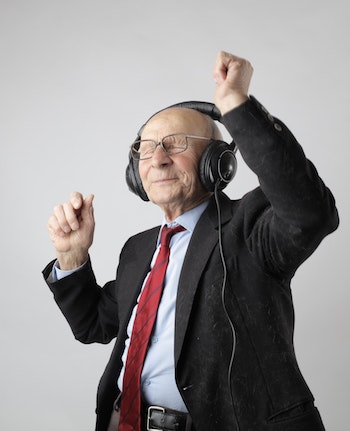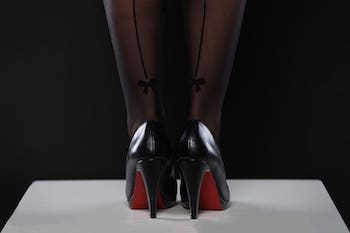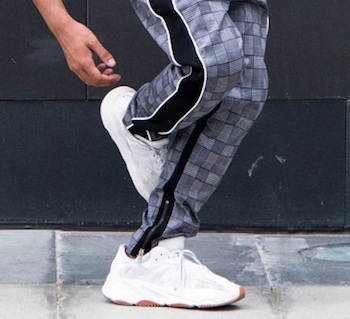Everybody knows Swan Lake. Its exquisite:
- Tutus
- Painfully ELEGANT poses
- Refined pointe shoes and
- Tchaikovsky’s sumptuous music make it a point of reference in the world of dance.
Whether you’ve ever seen this piece of ART or not, those are most assuredly the first images that pop up in your mind when you hear the word “ballet”.
Your Guide
 Alexandra Romanmi
Alexandra Romanmi
What about “tango”?
You probably imagine two aristocratic looking people, dressed in black and red, marching seductively towards one another on the dance floor.
You can almost hear the accordion crying in the background and feel the PASSION in the dancers’ eyes.
However, you’ve probably never danced tango.
Why is it so familiar then?
Dance is part of our lives whether we realize it or not, whether we practice it regularly or we only dance once a year at our office Christmas PARTY, forced by the circumstances.

We dance when we’re happy and in love, and sometimes outside our boss’s office after we get that promotion we’ve been waiting for.
We dance when we’re sad and need to get rid of the negative ENERGIES in our bodies; we dance when we’re lonely and want to connect with Mother Earth and we have been doing so since the very beginning.
Although nowadays we see it more like a leisure activity, dance has occupied a central position in our prehistoric and ancient ancestor’s life.
They used it to celebrate important events in their community and thus to SOLIDIFY their bonds between the members of their groups.
Milestones such as initiations of young people, yearly crop harvest, wedding ceremonies or magical rituals were all marked by a certain dance.
The Center of Experimental Archeology in Denmark has actually tried to reconstruct the most important “choreographies” from the Neolithic Era and the results are quite ASTONISHING, as we can now see how our predecessors perceived dance in comparison to what we know today.
So what is it about dance that stuck with us since the caveman days until now and how does our brain make it work?
Is the dancers’ brain different from than non-dancer’s one?
If yes, how?
And why does it matter?
Can we use dance as medicine?
The research field FOCUSING on the neuroscience of dance is still very new but highly promising since more and more renowned universities are undergoing studies to answer these questions.
Dance or Die: The Healing Rituals in Africa
HEALING effects of dance have been highly used throughout the many cultures of the old continent of Africa and understanding dance therapy means analyzing its roots.
Dance was considered to be VITAL, as the African dance tradition aimed to create a bond between the mind, the body and the community in order for the healing processes to take place.
In African Dance as Healing Modality Throughout Diaspora, Nicole M. Monteiro and Diana J. Wall talk about some of the most important African dance traditions and their relevance in the treatment and management of trauma in today’s practices.
One originates from Senegal and the other from Ethiopia.
The Ndeup and Zar are forms of SPIRIT possession rituals in which the patient is thought to be released from the spirit that caused his or her affliction.
They include:
- Drumming
- Singing
- Free & Choreographed dancing
- Are mainly based on creating a space
- Atmosphere which are proper for spiritual and
- Psychological release.
Western medicine does not agree with the hypothesis of a disease being caused by an angry SPIRIT, and neither do I.
What has been proven is the power of the actual catharsis – the purification of emotions – that takes place as a result of such ritualized dances.
The rituals offer people the PERFECT opportunity to release themselves of their psychological baggage and share their state of mind with the community they’re part of, which is fundamental for the treatment of traumatic experiences.
But this begs the question – How is the dancer’s brain different?
What happens when people dance?
This is Your Brain on Dancing
Our ancestors used it as a medicine for the soul and the body, but can dance really have a valuable THERAPEUTIC EFFECT in our lives?
To answer this question, we need to take a closer look at a dancer’s brain and understand how years of training may affect it.
Spinning ten times in a row on the tip of a pointe shoe can seem out of this world and completely UNATTAINABLE for most of us, but a few people do it and do it with such ease that it makes us wonder how.
The answer usually lies somewhere between years of practice and SLIGHT changes in the brain’s function and structure.
Teams of researchers worldwide have been examining the neuroscience of dance using professional dancers as subjects.
The majority of the RESULTS show that their brains have a few particularities:
• The motor cortex is more developed, thus improving the “motor reserve.”
• The action observation network is more alert
• The functional connectivity is enhanced
In a 2017 study, Dance and Music Share Gray Matter Structural Correlates, Karpati F.J. and his team indicate that dancers have an increased thickness of the superior temporal lobe.
Motor coordination is ENHANCED by the increase of what a team of American scientists call the motor reserve.
Developing these motor skills may protect against the aging process and other neurological disorders. We’ll cover those later on.
The action observation network refers to the brain system which allows us to MIMIC an action we have previously observed. Dancers perform better at this task in which both motor learning and imitation are involved.
A relatively recent finding which showed that observing someone else dance stimulates the brain’s motor system.
This has amazing applications in Action Observation Therapy (AOT), which is usually used in the treatment of neurological disorders such as Parkinson’s Disease.
Functional connectivity is a brain IMAGING term that refers to the statistical dependence of the signal from different cerebral areas.
A 2017 study shows that professional dancers have higher functional connectivity in an area of the brain called the cortico-basal ganglia which is responsible for motor control.
These important structural differences between the dancers’ brains compared to the non-dancers one, have stirred the interest of scientists from all over the world.
What’s the Neurological Process Behind Dancing?
We’ve seen how dance can structurally change the brain after years of practice. Now we can FOCUS on the processes that take place in our head the second we hit the DANCE FLOOR.
Dance is one of the most highly harmonized activities that people perform regularly.
It involves the same physiological processes as normal MOVEMENT, plus additional ones that help us synchronize our moves to music, tune our balance, and be more spatially aware than we usually are.
The story goes like this: The Parietal Lobe of the brain translates visual information into motor commands.
The signal travels to the premotor and supplementary motor areas that, in turn, send the impulses to the primary motor cortex, which COMMUNICATES the command to the skeletal muscles and causes them to contract.
The muscles send sensory information to the brain informing it about the body’s exact position and orientation in space.
According to an article published in 2008 in the Scientific American Journal, the GRACEFUL MOVEMENTS that we all admire in dancers are finely tuned in a particular area of the brain called the precuneus.
The interesting take from the article is that this region of the brain was also highly active while the dancers were only flexing their muscles in synchronization to music without actually MOVING THEIR LEGS.
The same team of scientists found the missing piece in the puzzle that explains why we tap out feet unconsciously when we hear music – which for some people is the most complicated dance move they’ll actually ever practice.
A tiny structure below the cortex called the medial geniculate nucleus is the one responsible for this strange PHENOMENON.
Researchers asked participants to dance with and without music, and scanned their brains during the PERFORMANCE.
They found out that this small subcortical area only lit up when the Music was Playing.
Since this could have simply been the result of the presence of an auditory stimulus, the scientists wanted to rule out that possibility.
They analyzed their subjects’ brain again, this time only while they were listening to music without moving their feet.
They saw no change in blood flow in the medial geniculate nucleus, so they concluded that its activity is related to synchronizing movement to music rather than the simple act of listening to music alone. Thus, they came up with the notion of unconscious entertainment.
What Do We Feel When We Dance?
In her doctoral dissertation, Dance on Cortex – Event Related Potentials and Phase Synchrony in Dancers and Musicians, Hanna Poikon found that dancers showed enhanced theta brain waves synchronization – which is related to emotion and memory processes – when watching a dance piece.
What this fancy-sounding result means is that dancers seem to be better at interpersonal interaction and self-understanding tasks. This supports the idea that regular dance training can change the behavior of a person.
The synchronization of theta waves underlines the way dancers tend to be better communicators and more empathetic people. They tend to better harmonize with people around them, leading to more natural cooperation with others.
Dancers literally become more easily attuned to other people’s brain frequencies. Dance helps us tell stories and thus interact with one another at a deeper level.
Poikonen states that dance can immerse us in something called a flow state. Although it might sound like a hippie term, it actually is a highly researched occurrence that refers to a state of full immersion in an activity.
This phenomenon is shown to increase contentment, the quality of the action, and the productivity of the individual experiencing it.
It lowers the activity of the part of the brain responsible for the logical deduction, making us less attached to unimportant details around us and more focused on our inner feelings, boosting our creative mind.
This comes in contrast with what happens in a musician’s brain whose playing of an instrument requires high precision and concentration.
The flow state has an important role in using dance as a treatment for mood disorders such as depression and anxiety.
It triggers the release of high concentrations of hormones that induce a state of relaxation, happiness, and comfort, while also reducing the activity of the amygdala – the region of the brain responsible for the fear and stress responses.
Another extremely valuable experience dance offers us is touching.
Yes, touching – the simple act of being aware of your surroundings by coming into direct contact with them.
It may not seem like a big deal, but in today’s highly technologized world, which tends to immerse us deeper and deeper in virtual reality, making us lose contact with the reality around us, touching is vital.
Touching has important neurological benefits. One particularly efficient way to take advantage of these benefits is the contact improvisation technique.
Contact improvisation, brought to life by Steven Paxton in 1972, refers to a partnered dance style that involves attentively listening to the other person’s body while trying to create highly fluid movements together.
It relies on non-verbal communication, gravity, and a wide range of sensations.
It is another way to take the performers’ minds off of the highly regulated sequence of steps they would otherwise have to learn and help them concentrate on a deeper connection with their partner.
A pilot study from the Washington University of St. Louis called Effect of a Short Duration, High Dose contact Improvisation Dance Workshop on Parkinson Disease, concluded that patients showed improved scores in the Berg Balance Scale (BBS).
And Unified Parkinson’s Disease Rating Scale (UPDRS), which means increased functional mobility and balance after contact improvisation sessions.
Dance, Not Drugs!
Today, in an era when overprescribing medication is the rule, people end up taking more pills than ever. We are bombarding our bodies with a lot more drugs than we actually need and we have to stop.
One way of doing that is by seeking out alternative therapies where applicable. The holistic approach of diseases includes addressing the patient from all angles, including their emotional, mental and social health along with the physical one.
Some of the disorders we can try to treat using complementary therapy such as dance therapy are:
Alzheimer’s disease,
Parkinson’s disease and other extrapyramidal syndromes,
Depression, Anxiety and other mood disorders.
The average human life span has continued to increase in the last decades and while this is good news, there are also unwanted consequences to living longer:
The World Health Organization predicts that the number of people affected by neurodegenerative disorders will escalate in the next few years. The most common among these are Parkinson’s Disease and Alzheimer’s disease.
Parkinson’s Disease
Parkinson’s Disease is a degenerative disorder that affects the nervous system and impairs movement. Patients are confronted with tremors, muscle stiffness, balance problems and sometimes speech and writing changes.
Dancing helps people with the whole set of symptoms. It incorporates practising movements such as backward walking and turning – particularly difficult for Parkinson’s Disease patients – helping them perfecting their technique.
A 2010 study proves that tango seems to be the most effective style for this disease as it has pauses in its routine forcing patients to practice movement initiation.
Its specific steps are similar to strategies used by physiotherapists to alleviate the freezing of gait – a phenomenon that occurs in Parkinson’s patients and is described as having their feet stuck to the floor by magnets.
The social component is also important, as the support of the group encourages patients to train more and makes sessions more enjoyable than individual treatments.
Alzheimer’s Disease
Alzheimer’s Disease is a type of dementia that impairs the memory, the thinking skills and causes behavioural problems.
The New England Journal of Medicine published a study called Leisure Activities and the Risk of Dementia in the Elderly, which clearly shows that dancing is the only physical activity that helps in the prevention of dementia, lowering its risk of early onset.
Rapid decision-making when trying to improvise a routine, memorizing choreographies and regularly exercising sequences of moves indicate to reduce the risk of dementia by 76%, which is twice as much as a cognitive activity such as reading.
Mood Disorders: Depression and Anxiety
Dancing should be on the medical prescription for every patient who has ever struggled with mood disorders such as depression or anxiety.
Its physical training component is the one that triggers the release of dopamine and endorphins, which are associated with pleasure, reward and euphoria.
The flow state we talked about earlier in the article also plays a major role in the treatment of mood disorders as it allows patients to focus on one particular task at which they will get better and better over time.
This helps them connect to a pleasurable activity while also feeling good about themselves as they see progress happening from one class to the next.
The musical component of dance classes is also of great importance as it is proves to improve functioning – maintaining a relatively normal level of involvement in activities and relationships.
Wrapping it Up…
If you’ve ever wondered what Tchaikovsky’s Nutcracker, the sensual Spanish Flamenco and the Haka – the sportsman’s favorite – have in common, now you know.
Your brain will like them all just as much and will thank you for indulging in such activities by offering you a clearer, more relaxed mindset, a better memory, an enhanced ability to connect to those around you, and overall a happier life.
So keep calm and dance the night away!
And in the meantime, tell me your story. How did dance change your life?


